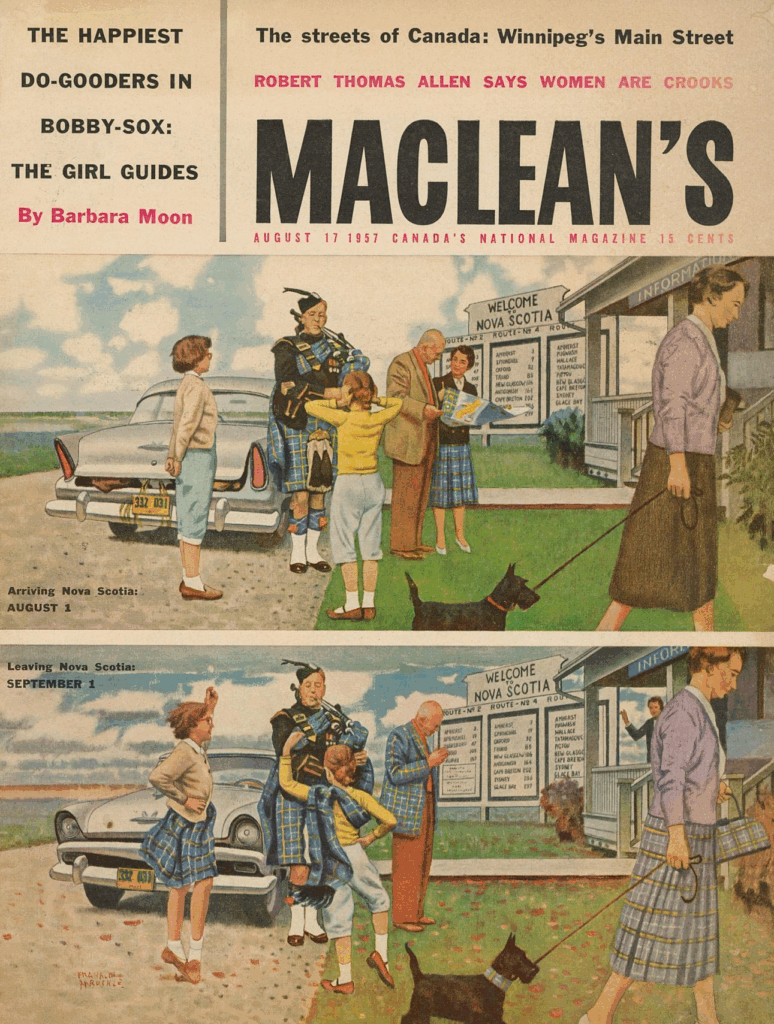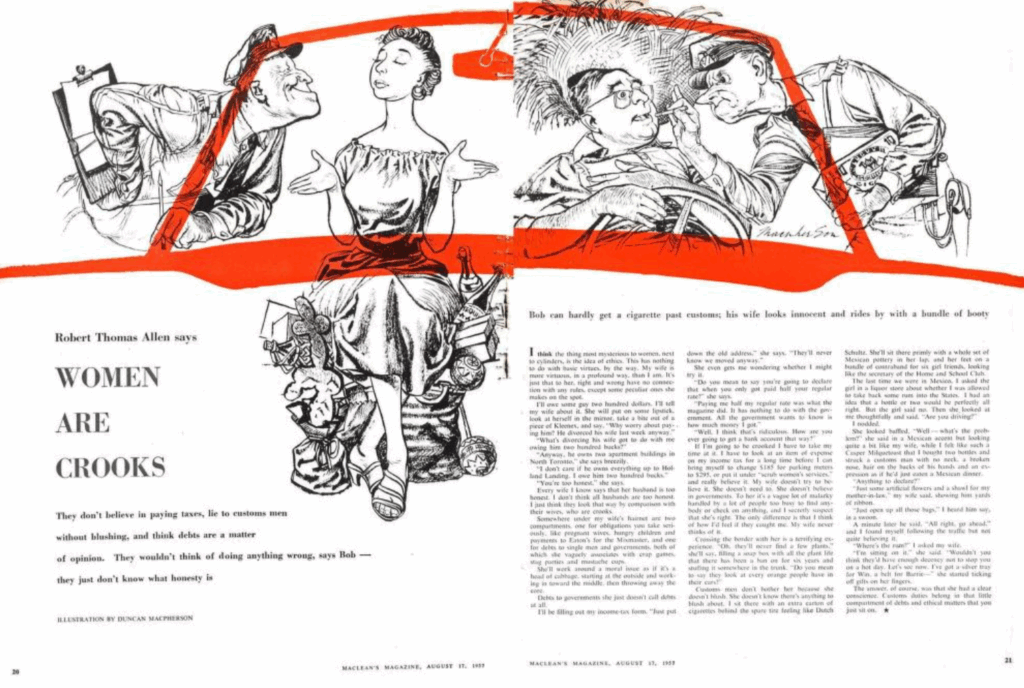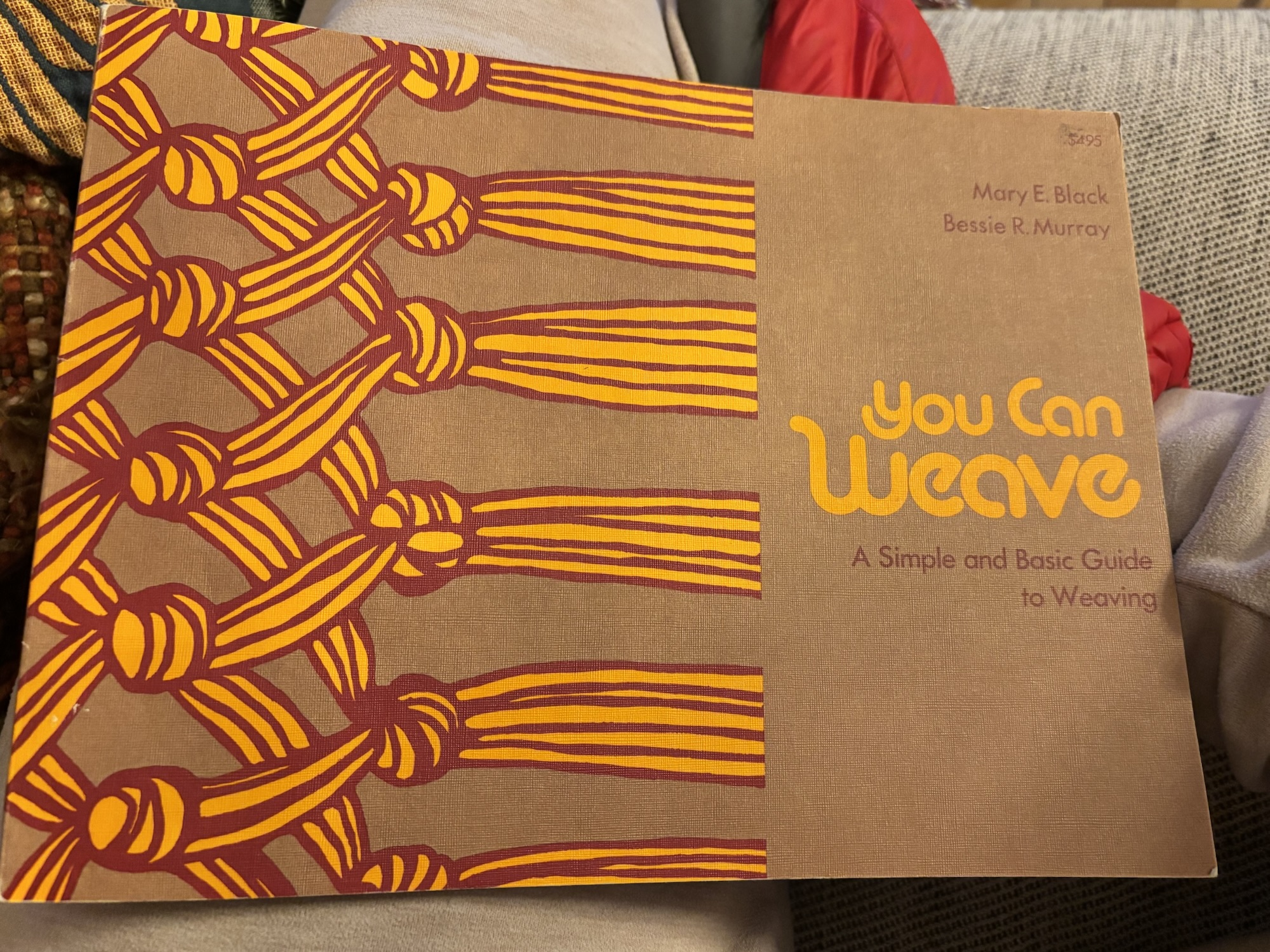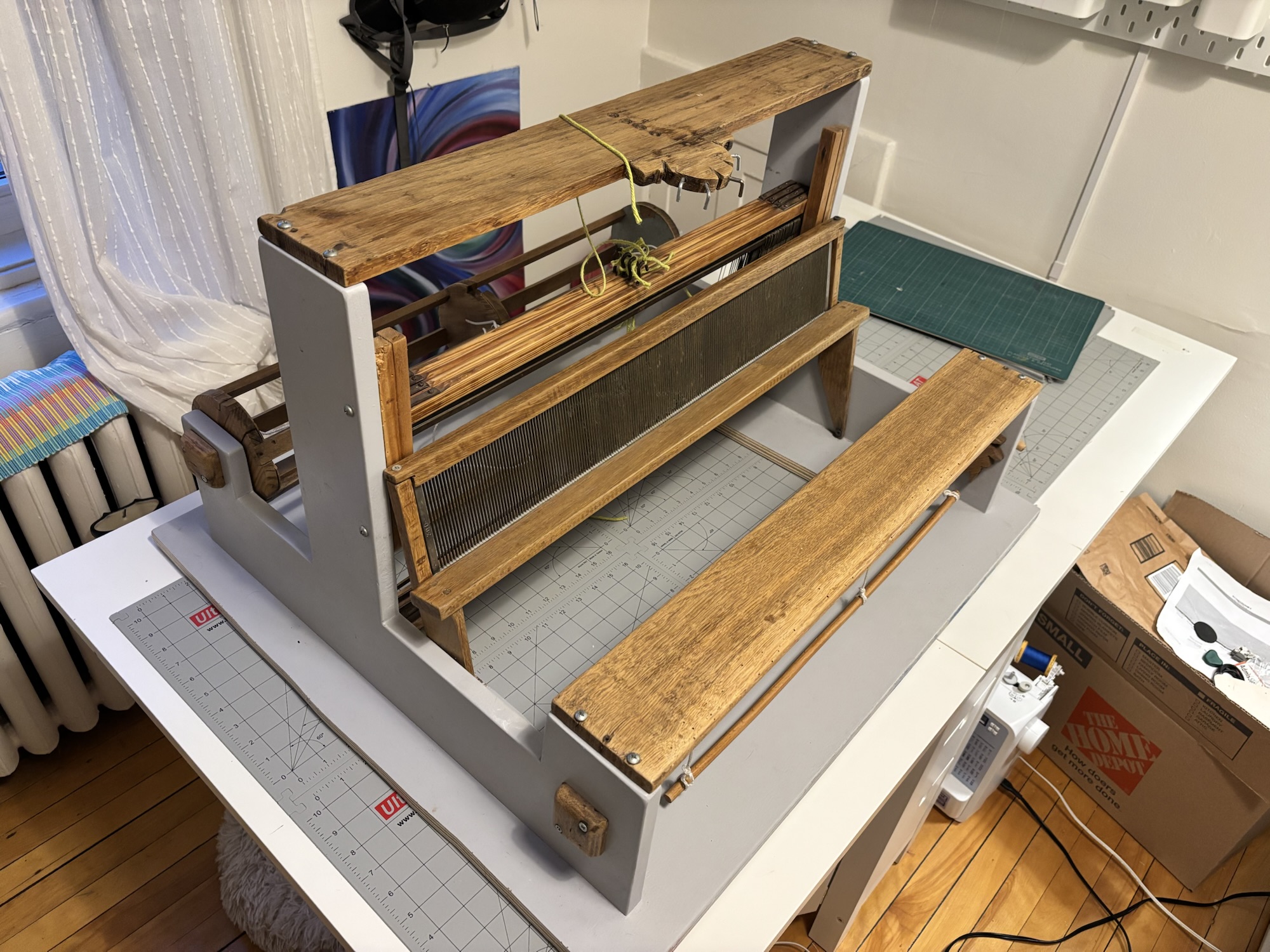
I’ve been collecting archival information about my grandmother, Bessie Murray, and the Nova Scotia Tartan. I found this Macleans cover from 1957 in an old email from my dad, that I think really gets across the “tartanism” of the time. The tartan was just four years old at this point, and apparently, already plastered all over everything– thanks in large part to the initiative of premier Angus L. Macdonald.
Despite its name, Nova Scotia at this time, and since its founding was actually not predominantly Scottish. Apparently Ontario had a larger Scottish community. The Extremely Scottish version of Nova Scotia seems to have been largely an invention of tourism marketing, designed to capture the business of Americans seeking a “foreign” experience, without the hassle of going overseas. The province already had the rolling hills and the sea, and Bessie’s tartan arrived at just the right time to serve as an emblem for the movement, and increasingly, for the province itself.
Long before it was Nova Scotia, this place was home to the Mi’kmaq. The colonising settlers that arrived thereafter were not only from the UK, but also France (hello, Acadians) and Germany. It was also home to a significant number of Black loyalists, and workers from the Caribbean. So there are some people missing from this extremely white cover image. (Everyone’s hair even seems to be redder in the “after” image.)
For further reading on this topic, I’ve found a pair of very interesting articles, from historian Ian McKay, and art historian Hilary Doda. I’m sure I’ll return to them many times, as my research continues.
I asked my dad about it, and he said “it was a different time”– an incomplete statement, but I suppose not inaccurate. This particular issue of Canada’s biggest national magazine also included this two page opinion piece about how one guy finds all women dishonest. You would need to work in the manosphere to write a piece like this today!

Okay, so the times are not actually that different. But still, I think of my grandmother, an artist and master weaver, founding and running her business at the time, and I wonder just how she did it.




